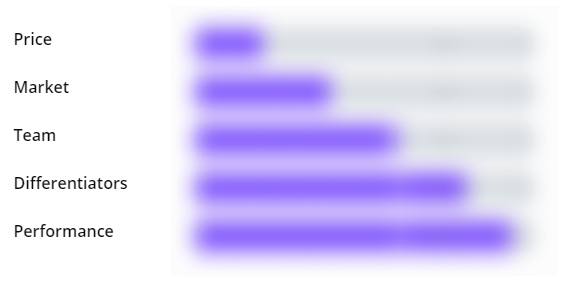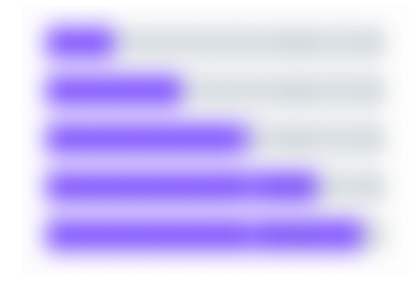StackSource
Online financing portal for real estate investors
Overview
Raised: $2,453,165
Rolling Commitments ($USD)
05/01/2021
$40,886
760
2015
Real Estate & Construction
Proptech
B2B/B2C
High
Low
Summary Profit and Loss Statement
| Most Recent Year | Prior Year | |
|---|---|---|
|
Revenue |
$1,219,316 |
$892,638 |
|
COGS |
$609,149 |
$481,765 |
|
Tax |
$0 |
$0 |
| ||
| ||
|
Net Income |
$159,011 |
$112,764 |
Summary Balance Sheet
| Most Recent Year | Prior Year | |
|---|---|---|
|
Cash |
$154,355 |
$107,406 |
|
Accounts Receivable |
$229,323 |
$89,045 |
|
Total Assets |
$534,000 |
$315,583 |
|
Short-Term Debt |
$70,739 |
$12,278 |
|
Long-Term Debt |
$926,993 |
$926,048 |
|
Total Liabilities |
$997,732 |
$938,326 |
Upgrade to gain access
-
$25 /month
billed annually - Free portfolio tracking, data-driven ratings, AI analysis and reports
- Plan Includes:
- Everything in Free, plus
- Company specific
KingsCrowd ratings and analyst reports
- Deal explorer and side-by-side comparison
- Startup exit and failure tracking
- Startup market filters and historical industry data
- Advanced company search ( with ratings)
- Get Edge Annual
Edge
Synopsis
Real estate investing can be incredibly profitable for individuals. However, there are some problems in the industry that technology can and should rectify. For starters, the process of finding a lender can be difficult and complex. Some investors take the traditional route by going to a bank. However, this takes time and can often result in paying an interest rate that is higher than what might be paid elsewhere. Alternatively, investors have the opportunity to hire a broker. The problem with this though, is that the broker will often funnel the investor in question to their preferred contacts, limiting the investor’s exposure. This option also tends to result in long wait times and higher than expected interest rates.
One company that wants to fix these problems is StackSource. Through the company’s platform, investors seeking out loans are matched with loan providers. According to management, it has more than 700 of these providers on its platform today. Monetization is achieved through a fee of 1% for the loan’s origination. StackSource also has other features under development and in use. One of these is a browser extension that allows the company to receive quotes for any property listing that somebody views online. It is also working on a loan quote API that it hopes to share with other lending portals. Other features on the company’s road map include advanced underwriting, location intelligence services, loan tracking, and lender ratings. StackSource is currently focused on three main categories of commercial mortgages: stabilized multi-family properties, single tenant net lease properties, and those that fall under SBA 504.
StackSource’s current Wefunder raise has been rated a Top Deal by the KingsCrowd investment team.
Price
StackSource is raising capital through a SAFE. The company has set its valuation at $13.8 million, and the SAFE will convert into equity subject to a 10% discount. At first glance, this price is rather high in comparison to other startups currently raising capital. However, given StackSource’s strong financial performance, this valuation is actually quite reasonable. Thus, the price score for StackSource is very strong.
Synopsis
The commercial real estate market in the United States is quite large. According to one source, in 2019 the market was worth $600.6 billion. Of this, $287.2 billion was in the multifamily category. Now, it should be mentioned that this industry does not operate like the broader economy or the many smaller industries within it. Mortgage originations are highly cyclical. For instance, in 2016, mortgage originations in the commercial space totaled $491 billion. This grew to $530 billion in 2017 and to $573 billion in 2018.
However, according to the Mortgage Bankers Association, loan volumes dropped 34% in 2020 to $395 billion. The multi-family component to this followed a similar route. It grew every year, rising from $214 billion in 2016 to the $287.2 billion already cited for 2019. However, it did decline to $288 billion in 2020. For 2021, the current forecast is for multi-family to grow to $305 billion and for the total market to grow to $407 billion. Given StackSource’s revenue model, the largest its opportunity could be in the US totals 1% of all mortgage originations in any given year. So while the greater mortgage market is quite substantial, StackSource’s specific niche is very limited. Due to this limited reach, the company’s market score is its lowest across all five metrics.
Team
At present, there are two key figures in charge of StackSource. The first of these is Tim Milazzo, the company’s co-founder and CEO. Prior to starting StackSource, Milazzo worked as a sales operations manager at Facebook where he performed analytical and operational support for the sales and business teams. He also worked with their publisher and tech group. Before that, he was a sales operations and analytics manager at LiveRail. It was through LiveRail’s acquisition by Facebook for between $400 million and $500 million that he came into Facebook as an employee. He performed much of the same work there that he later did at Facebook. Prior to that, Milazzo was a strategic account manager at Google. His focus there was on Salesforce-related work, as well as on managing and growing relationships in the entertainment sector.
The other main individual at StackSource is Nathan Wall. He is the company’s other co-founder as well as its CTO. In the past, he served as a software engineer at Google. There, he focused on local search and location-based search expansion. And before that, he was a software engineer at AppNexus, where he developed tools and components used by frontend engineers.
In all, the technical experiences of these two individuals is solid. However, neither has any previous entrepreneurial endeavors, and neither has strong real estate/mortgage lending experience. Balancing these factors together, the team score for StackSource is middle of the road.
Differentiators
While offering loans online is not a new concept in today’s market, StackSource does bring some unique differentiators to the table. The company’s easy-to-use interface and its ability to quickly and efficiently match investors with lenders is a key distinction from current competitors. The concept of adding a browser extension also seems unique. And the company’s loan quote API could be an interesting feature. Having easy to access data, a command center to provide for traditional advising, and more, really adds value to its platform. The main concern facing StackSource is the ability for a competitor to replicate its platform/services. However, this concern is currently offset by the strength of the company’s features. Thus, the differentiators score for StackSource is strong.
Performance
Over the last two years, StackSource has really hit the ball out of the park when it comes to growth. In 2019, the company generated $892,638. This surged to nearly $1.22 million in 2020. Net income was positive by $112,764 in 2019, and in 2020 this figure was $159,011. According to management, operating cash outflows totaled $66,981 in 2019, but the company did see a net inflow of $7,634 last year. StackSource’s goal for 2021 is to grow revenue to more than $3 million. It also wants to increase its Capital Advisors as well. The company’s goal is to launch the browser extension and API this year. And it is looking to hire nine additional people to join their firm. As of November 2020, the company had reached the 100-loan mark. And today it operates in no fewer than 28 states. All of this performance is very robust, resulting in a near perfect performance score for StackSource.
Bearish Outlook
At this point in time, there’s not a lot about the company that is bearish. The market and team could be larger and more complete, respectively. In addition, while the market overall looks fairly large, there’s no denying that it can be volatile from year to year. Of course, this can be said with other industries as well. The other bearish consideration is competition. What would it take for a competitor to do precisely what StackSource is doing here? However, given the size of the origination market, it’s easy to imagine that there is plenty of room for multiple companies to find success.
Bullish Outlook
On the bullish side of the equation, there is a lot that investors should be excited about. The surging revenue and positive operating cash flow are just starters. The differentiation of the product is significant. Its traction of getting lenders on board and users to actually take out a real estate loan are also impressive. The company is already operating in more than half of the US, and it is focused on its near term aims.


